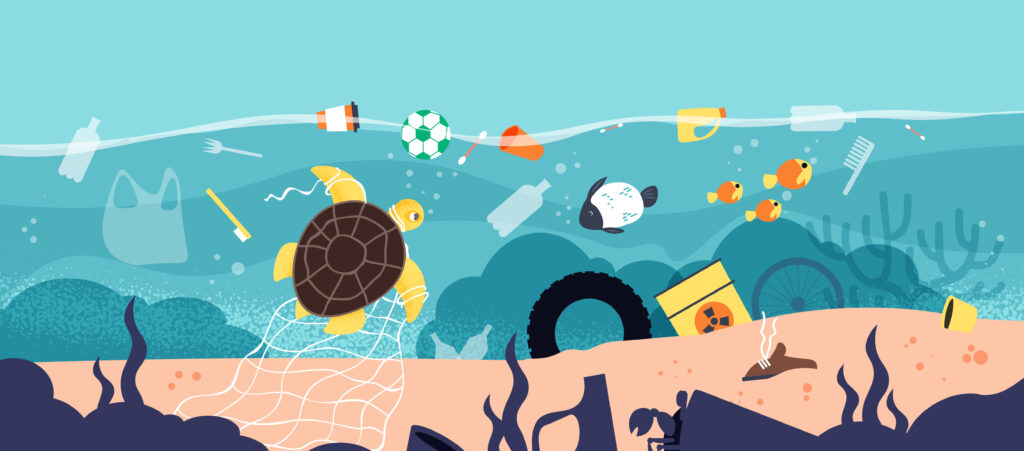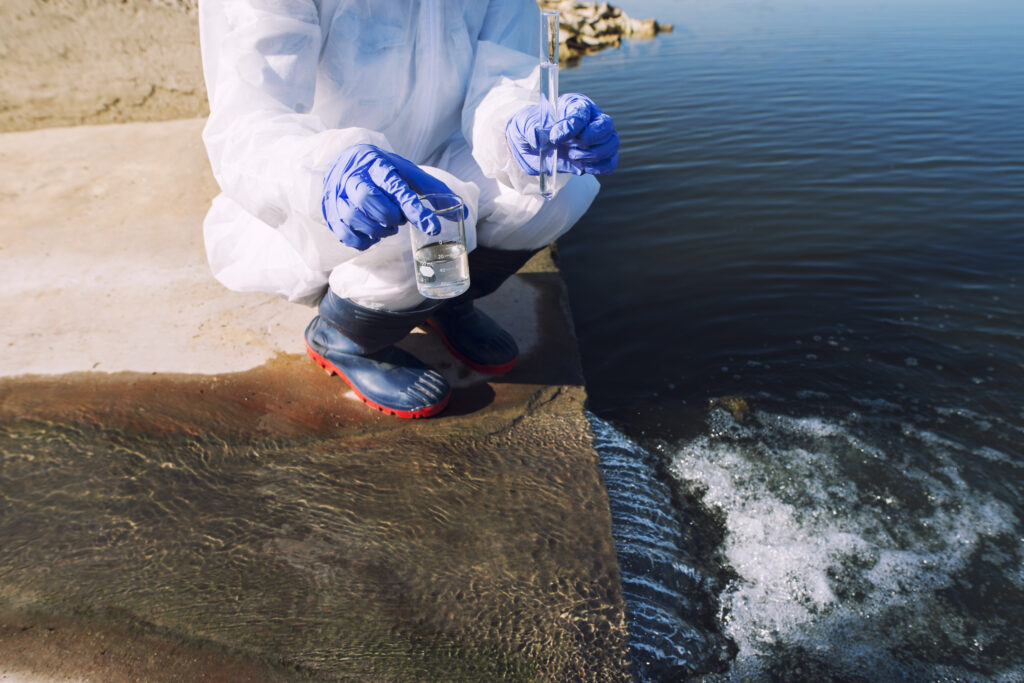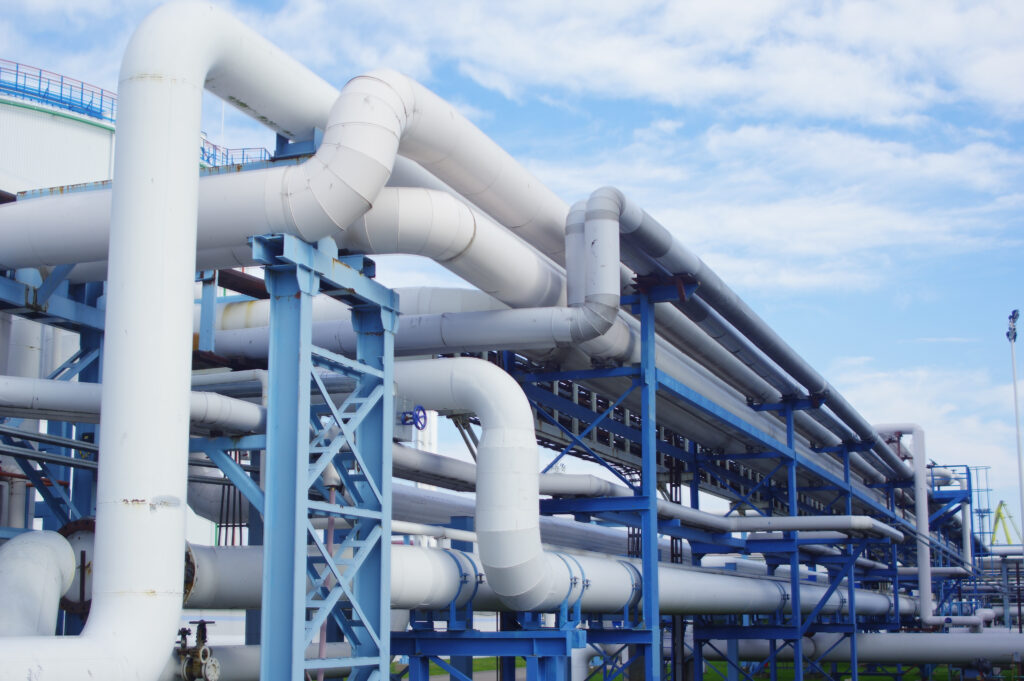Plastic, once considered the greatest invention of the modern era, has become one of the most challenging materials to manage. Every year, up to 13 million metric tons of plastic find their way into the ocean, equivalent to a garbage truck full of waste every minute. While numerous initiatives, campaigns, and agreements have been implemented to ban plastic bags and straws, these are not the only pollution problems in the oceans. Visible plastic near the ocean’s surface, such as the Great Pacific Garbage Patch, represents only 3% of the total plastic in the ocean. Plastic also sinks to the ocean floor, remains suspended in the water column, or is deposited in remote locations, making cleanup difficult.

In addition to plastic, there are other pollutants affecting the oceans, such as nutrients, heavy metals, pesticides, and hydrocarbons. These pollutants enter the ocean directly through rivers, stormwater, or wind. Both plastic and non-plastic pollution have a significant impact on the environment, human health, and the economy. Therefore, protecting human and marine health and maximizing the benefits of a sustainable ocean economy will require not only reducing plastic waste but also addressing all oceanic pollutants.
Improve Wastewater Management

One key solution to reduce plastic pollution and other contaminants in the oceans is to improve wastewater management. Currently, around 3 billion people lack access to controlled waste disposal facilities. Untreated wastewater contains various contaminants, such as pathogens, chemicals, and plastics, posing a serious risk to human and environmental health. By developing and implementing sustainable wastewater management infrastructure, the amount of plastic and other contaminants entering the ocean can be significantly reduced.
Enhance Stormwater Management
In addition to wastewater management, it is crucial to improve stormwater management to reduce plastic pollution and other contaminants in the oceans. Implementing filtration systems in drainage pipes and at river outlets can prevent waste, including plastics and chemicals from roads, from reaching the ocean through stormwater runoff. Moreover, regulating nutrient and pesticide use and changing behaviors that contribute to waste generation and ocean pollution through stormwater are important.
Implement Green Chemistry Practices and New Materials

Another important solution is to adopt green chemistry practices and develop new materials. This includes banning hard-to-handle substances like expanded polystyrene, limiting the use of concerning chemicals like phthalates, and promoting research into alternative materials. The goal is to develop new materials that retain the desirable properties of plastic without the associated issues, such as real biodegradability. This way, plastics can be prevented from causing significant harm when they enter the ocean.
Practice Radical Resource Efficiency
Reducing plastic use is essential to address ocean pollution. This involves imposing fees on single-use plastics, promoting industry voluntary standards for reducing fossil fuel-derived plastics, and changing cultural norms regarding waste generation, consumption, and reuse. For example, the introduction of plastic bag charges in the UK has reduced the use of plastic bags by 80% since the legislation was implemented in 2015.
Recover and Recycle Used Materials
Recovering and recycling used materials are fundamental parts of the solution to reduce plastic pollution and other contaminants in the oceans. Currently, only 9% of all plastic produced since 1950 has been recycled, while another 12% has been incinerated, and the remaining 79% accumulates in landfills or the natural environment. To address this issue, it is necessary to implement extended producer responsibility laws, provide incentives for waste segregation and recycling, strengthen markets for recycled plastics, and implement ‘Trash Fishing’ programs. This way, the amount of plastic and other contaminants ending up in the oceans can be reduced.
Implement Coastal Zone Improvements

Improvements in coastal zones are also important for reducing ocean pollution. For example, restricting offshore aquaculture can help reduce plastic pollution and other contaminants associated with this practice. Additionally, encouraging participation in beach cleanup programs and clean beach certifications can reduce litter on beaches and raise awareness about pollution.
Build Safe Local Food and Water Systems
Lastly, it is essential to build safe local food and water systems to reduce pollution in the oceans. This involves establishing potable water treatment systems where needed and ensuring adequate standards for drinking water. By doing so, not only will the amount of plastic and other contaminants entering the ocean through single-use plastic bottles be reduced, but it will also assist people who currently lack access to clean drinking water.

In Conclusion
Reducing plastic pollution and other contaminants in the oceans is a crucial challenge to protect human and marine health and promote a sustainable ocean economy. The presented solutions, such as improving wastewater and stormwater management, practicing radical resource efficiency, implementing green chemistry practices, recovering and recycling used materials, implementing coastal zone improvements, and building safe local food and water systems, are important steps toward achieving this goal. However, it is essential for these solutions to be implemented on a large scale and in collaboration with public-private partnerships, innovative financial arrangements, and the involvement of diverse sources of capital. By taking bold and integrated actions that address pollution across all sectors, we can build a sustainable ocean economy that expands economic opportunities and improves the health and prosperity of millions of people. Furthermore, promoting a circular economy is essential to prevent pollution before it occurs and ensure the long-term sustainability of our oceans.
Primary Keywords: reduce, plastic waste, oceans
Secondary Keywords: pollution, wastewater management, stormwater management, green chemistry, recycling, coastal zone improvements, safe local food and water systems
Image attribution
freepik.es/foto-gratis/ecologista-irreconocible-pie-donde-aguas-residuales-encuentran-rio-toma-muestras-determinar-nivel-contaminacion-polucion_11138128.htm#query=Wastewater Management&position=0&from_view=search&track=ais
freepik.es/vector-gratis/concepto-biotecnologia-gradiente-investigador_13176503.htm#query=Green Chemistry&position=4&from_view=search&track=ais
freepik.es/foto-gratis/primer-plano-tuberias-industriales-alrededor-factor-dia-soleado_28694673.htm#query=Water Systems&position=1&from_view=search&track=ais






